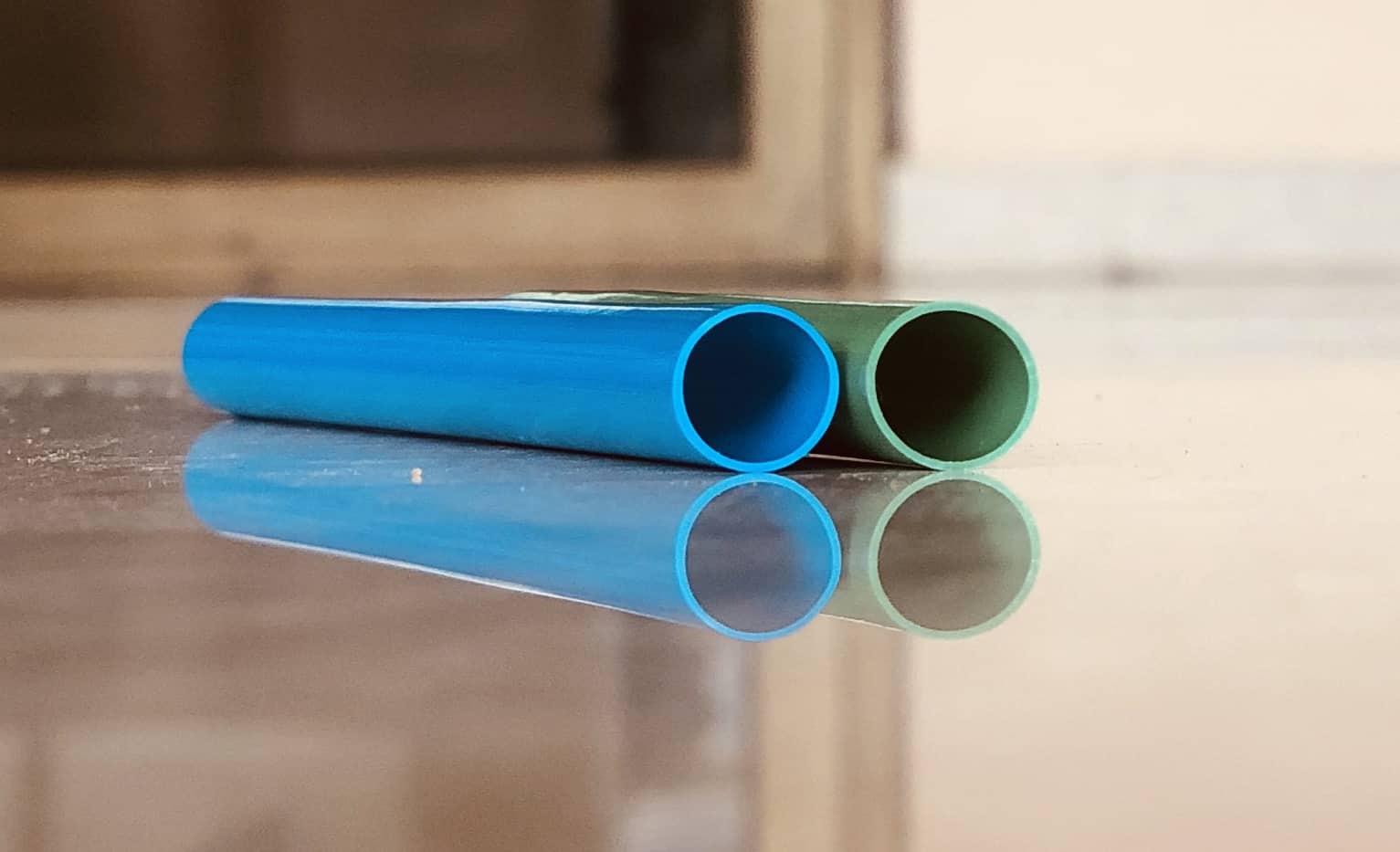Extruding a material like PTFE is never straightforward. The nature of the polymer necessitates that any standard methods of processing – such as melt extrusion, injection moulding, or even thermoforming – fail to work with PTFE. The reason for this boils down to the fact that PTFE has no melt flow. Even when taken to its ‘melting point’ of about 380°C, PTFE will merely attain what is known as a ‘gel state’, wherein it goes from opaque to transparent, but stays very much in the same form. This means that the material cannot be injected into a mould to make complex shapes and that it cannot be otherwise shaped or drawn into any kind of final shape. As a result, different techniques have been devised to bring PTFE into a final shape as needed.
PTFE extrusion is one such method used for making tubes and hollow profiles. Rather than melt the material and draw it through a die, the process of PTFE extrusion can be done in one of two ways.
-
Ram extrusion - where subsequent charges of PTFE resin (powder) are layered and compressed one above the other inside a die and the die is heated from the outside to allow for the PTFE resin to fuse into a single piece.
-
Paste extrusion - where a special type of resin (fine powder resin) is blended with an extrusion aid and then squeezed at high pressure through a die at room temperature. The resulting ‘extrudate’ is then heated in ovens to fuse the material.
Between these processes PTFE paste extrusion is considered more complex and it is usually employed when the final profile has a thin cross section. Hence, PTFE thin-walled tubes, or spaghetti tubes are made in this fashion. Ram extrusion is usually used when the cross section is thicker and when the requirements are for a single solid rod.
Comparing properties
-
Material grades - both ram and paste extrusions need to be made with specific grades. For paste extrusion, fine powder resins are used. These resins mix easily with extrusions aids (usually a mineral spirit like naphtha) and once blended, they will form fibrils when pressed between the fingers. In some sense, the extrusion aid forces the PTFE to behave somewhat like a liquid at high pressures, so that the material can be easily passed through a die. Typically, virgin grades are used in paste extrusion, although mixing pigments and even some quantity of additives is done easily. However, when blending fillers (such as glass fibre or carbon fibre) in excess of 5%, there can be complications, as the distribution of the filler is not always uniform. In contrast, for ram extrusion, pre-sintered or free flowing resins are used. Typically, virgin materials would be pre-sintered resins – as they flow easily and can be uniformly distributed in the die without issue. For filled grades, any grade can be used provided it is a free flow grade.
-
Mechanical strength - the difference in the two processes rests largely on the way in which the extrusion is done. For ram extrusion, the final form is built up by adding subsequent charges of PTFE one on top of the other. It is therefore an additive process. As a result, the material will have higher strength in the radial direction and less strength longitudinally (weak points would result in the joint between subsequent charges). For the same reason, since paste extruded resins are formed by passing the resin lengthwise through a die (think of how penne pasta would be made), the strength lies in the longitudinal direction. Un-sintered tube has a tendency to crack or split along its length if it is handled even slightly roughly before being cured in the oven. It is for this reason that paste extruded tubes are preferred in applications where there is likely to be a high tensile load on the tube. On the other hand, ram extruded tubes are used in lining applications, as radial force needs to be applied to the tube when inserting it into a metal pipe to line it from the inside.
Ram extruded tubes also tend to be much stiffer and lack the flexibility of paste extruded tubes. -
Sizes - as mentioned earlier, paste extruded tubes would typically be used where the wall thickness was small. Usually, anything within a wall thickness of 2.5mm would be paste extruded, whereas higher diameters and wall thicknesses are ram extruded. Another limitation with ram extrusion is that because the tube is stiff, there is a cap on the length that can be obtained before the finished tube reaches the ground and needs to be cut. With paste extrusion, due to the tube’s flexibility, material can be collected in a coil, allowing for bundles of many of hundreds of meters in a single length. The same flexibility allows the paste extruded tubes to be easily bent and shaped to suit the final requirement.
Fundamentally, both ram and paste extruded tubes are made with the same material. However, the processing techniques dictate that the end properties are different. Care needs to be taken to understand the end application and to choose the tube that best suits this.
Read More
1. Exploring the Versatile World of PVDF
2. Air Permeability Testing and Water Entry Pressure Testing in Expanded PTFE Membranes


